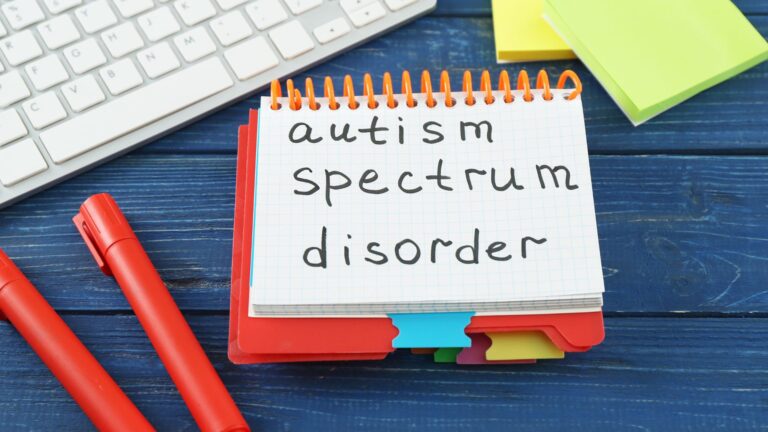Over the years, numerous diagnostic tests have emerged, each aiming to shed light on the intricacies of identifying autism spectrum disorder (ASD) in patients to improve their lives and help them get the essential services they require for autonomy. With the evolving autism diagnostic framework, the RAADS-R test, also called the Ritvo Autism Asperger Diagnostic Scale-Revised, is a beacon of knowledge and understanding for many experts and providers supporting and treating developmental uniqueness in older individuals.
Autism is a complicated condition with various symptoms and degrees of severity, affecting every individual living with it differently, according to the CDC. As caregivers of individuals with ASD, arriving at a suitable diagnosis can be challenging. In the case of many adults, they spend their entire lives undiagnosed and struggle through symptoms with little support or understanding, according to autism research journals. Ultimately, diagnosis is critical for better outcomes regardless of the individual’s age.
According to the Journal of Autism and Developmental Disorders, the RAADS-R test is a self-reporting questionnaire helping adults with autism who may have gone undiagnosed due to how they present. However, clinicians may also administer the RAADS-R test within a clinical setting as it is not an instrument of self-diagnosis. In some cases, though created with adults in mind, clinicians can sometimes utilize the test to understand children better.
In this comprehensive guide by ABA Centers of America, we will explore the history of the RAADS-R test. Furthermore, we will examine its critical components, including its sub-scales, which include language, social relatedness, sensory-motor skills, and circumscribed interests. So, read on as we overview the inner workings of the RAADS-R test and uncover the advantages it presents and the challenges it may pose for those seeking an accurate autism diagnosis.
Visit ABA Centers of America for more information about Autism Testing and ABA therapy.
Exploring the History of the RAADS-R Test
Initially established as the RAADs test, the RAADS-R test is a revised, comprehensive assessment tool revolutionizing the way professionals approach diagnosing autism and the many symptoms it can present at times. From its modest start to its current iteration, this test has become a cornerstone in understanding autism for many.
The test was first introduced in 2008 to identify and measure cognitive and behavioral characteristics in individuals on the spectrum. Dr. Riva Ariella Ritvo designed the test as the prevalence of autism grew, and more adults sought support. Now, the RAAD-R tests address the expanding gaps in autism screening among adults with autism. Ultimately, the instrument is advantageous in helping clinicians diagnose the increasing population of autism globally.
The RAADS-R test is a revision from the original RAADS test, which characterizes autism in individuals through 78 distinct questions regarding autism symptomology. The initial test questions differentiated individuals with autism from those without the disorder by assessing language, sensory-motor function, and social relatedness.
Later, the original RAADS test was revised to become the RAADS-R test, which includes 80 questions that address personal interests and more clearly define the initial questions. Like the initial test, the RAADS-R test is typically self-reported and employed by individuals over 16 with an average IQ range. Today, with growing awareness surrounding autism, more adults seek autism services continuously, demonstrating the value of a test like the RAADS-R.
Critical Components of the RAADS-R Test
The RAADS-R test functions to help effectively identify critical traits and behaviors associated with autism, allowing for a more accurate and comprehensive diagnosis. The test consists of 80 questions characterized into four areas:
- Sensory processing
- Social relatedness
- Language
- Circumscribed interests
For each test statement, the test taker must select one of four selections:
- Never true
- True only when I was younger than 16
- True now only
- True now, and when I was young
By analyzing the answers to these questions, clinicians can further determine whether a person meets the diagnostic criteria for autism. The RAADS-R test optimizes treatment by testing the following subscales carefully while combining multiple perspectives and insights.
Understanding the Test Sub-Scales
Language
The language subscale of the RAADS-R contains seven statements focusing on the following:
- Small talk: the ability to chat about non-preferred topics during interactions and not obsess over highly preferred interests.
- Echolalia: the individual may recite rescripted language from TV, music, or books.
- Being Literal: the patient has difficulty understanding if the intention aligns with what is said. For instance, metaphors or inferences can be confusing.
Social Relatedness
The social relatedness subscale consists of 39 statements concerning socialization, including:
- Mentalization: understanding the feelings and thoughts of others.
- Mutual Interests: the patient prefers to spend time with others who share their interests.
- Outsider: the sense of not belonging or being different
- Bluntness: unintentionally being rude, inappropriate, or attracting attention to mistakes.
- Dialectical reciprocity: challenges with turn-taking or appropriate responding.
- Emotional reciprocity: struggles to understand emotions or emotional tone.
- Auditory processing issues: difficulty communicating with more than one person simultaneously.
- Object permanence: being unconcerned with the absence of others.
- Relationship maintenance: struggles with establishing or maintaining relationships.
- Nonverbal communication: difficulty understanding body language.
- Imitating: copying
- Camouflaging: masking automatic behaviors to fit in with others.
Sensory-Motor
The sensory-motor sub-scale consists of 20 statements analyzing:
- Voice volume: speaking too quietly, loudly, or fluctuating significantly between both.
- Voice differences: using different voices appearing cartoony, childish, silly, or monotone.
- Motor Control Issues: clumsy or challenged coordination.
- Sensory: sensory-seeking behavior that may be painful, harmful, dangerous, or overwhelming. Anxiety may also be present in sensory overstimulation.
Circumscribed Interests
The circumscribed interest subscale focuses on 14 statements examining:
- Detail preference: focusing on more minor features instead of the bigger picture or the inability to do both simultaneously.
- Stress around the unexpected: Strong adverse reaction to change.
- Special interests: consistently ruminating on specialized interests.
By measuring a person’s behavior in these areas, clinicians and the individual can better understand their unique needs and how to support them best. These sub-scales significantly improved our understanding of autism and helped individuals receive the diagnosis they need or may have never received.
Understanding RAADS-R Test Scores
Navigating the world of autism testing and scares can be a daunting task. Still, the RAADS-R test scores can provide more clarity by indicating the presence of autism in the person taking the test. The total RAADS-R test score can range between 0 – 240. The higher the score, the higher the likelihood the individual has autism. A score at or above 65 indicates autism. Understanding these scores can provide valuable insight into an individual’s diagnosis and help them tremendously. Test scores can be paper or automated.
Here are some interpretations of RAADS-R scores:
- 25: No criteria for autism
- 50: May possess traits but not likely to have the condition
- 65: Minimum score to indicate ASD
- 90: High indication of the autism spectrum, although neurotypical individuals can also produce high scores.
- 130: Standard autism score
- 160: High demonstration for evidence of autism
- 227: The maximum score for autism
While the RAADS-R scores benefit the autism diagnostic process, it’s vital to recognize that no test can stand alone and produce a conclusive autism diagnosis. Licensed providers must consider variables beyond singular autism testing scores, including behavioral history and other potential medical issues.
Benefits of Employing the RAADS-R Test for Autism Diagnosis
One of the primary advances of the test is its self-reporting, making it more accessible for individuals who may be curious about neurodiversity. Individuals can identify their symptoms and explore insights into their behaviors. Furthermore, taking the test can push some to take the following steps and explore their options for clinical support.
Overall, the RAADS-R test benefits both individuals taking it and healthcare professionals administering it. In the case of individuals, taking the RAADS-R test supports self-awareness and fosters self-acceptance. It provides them with the necessary tools to seek the required healthcare. In contrast, healthcare professionals benefit from the test results and hold a deeper understanding of the individual’s autism and experiences.
Challenges of the RAADS-R Test
While the RAADS-R test is considered reliable and, like other diagnostic tools, it has unique limitations. One of the main challenges of the RAADS-R test is interpreting the results accurately, as it can be difficult to differentiate between ASD symptoms and symptoms of other mental health disorders.
In addition, the test may not be suitable for individuals who experience difficulty with self-expression, as it relies heavily on self-reported symptoms, making a clinical presence helpful. Despite these challenges, the RAADS-R test remains a valuable tool in diagnosing ASD, providing individuals with a better understanding of their symptoms, behaviors, and areas needing support.
Test Taking Tips!
While the RAADS-R test shouldn’t be overwhelming, it is possible to experience some anxiety around taking the test. Here are some tips to consider before you begin:
- Familiarize yourself with the testing format and statements.
- Review the information regarding autism traits.
- Try roleplaying relaxing techniques before test-taking time.
- Remember, the test is simply a tool for better understanding. There is no wrong or right answer or failure possible.
Choosing the RAADS-R Test
The RAADS-R test is a valuable tool for recognizing the presence of autism in older individuals; select clinicians may also utilize it to help younger clients if suitable. It provides an informative and helpful system for professional assessment and diagnosis. It also increases accessibility for many but is best used alongside a clinician.
The questions presented to the patient help assess facets that can make life on the spectrum more difficult. It also helps many adults who have fallen through the cracks, requiring a diagnosis. Because of the broad scale the RAADS-R presents, it has become one of the most reliable autism assessments available today, helping many clinicians more appropriately diagnose autism.
More About ABA Centers of America
ABA Centers of America understands that arriving at an accurate autism diagnosis is critical to the quality of life for many neurodivergent families. Upon an autism diagnosis, your child or teenager typically qualifies for ABA therapy, often covered by insurance as it’s deemed a medical necessity for those on the spectrum. Our expert ABA team can help.
If you have additional questions or want more information about what we do here at ABA Centers of America, call us now at 844-969-4222 or contact us here for more information about your options for ABA therapy or autism testing with us.







